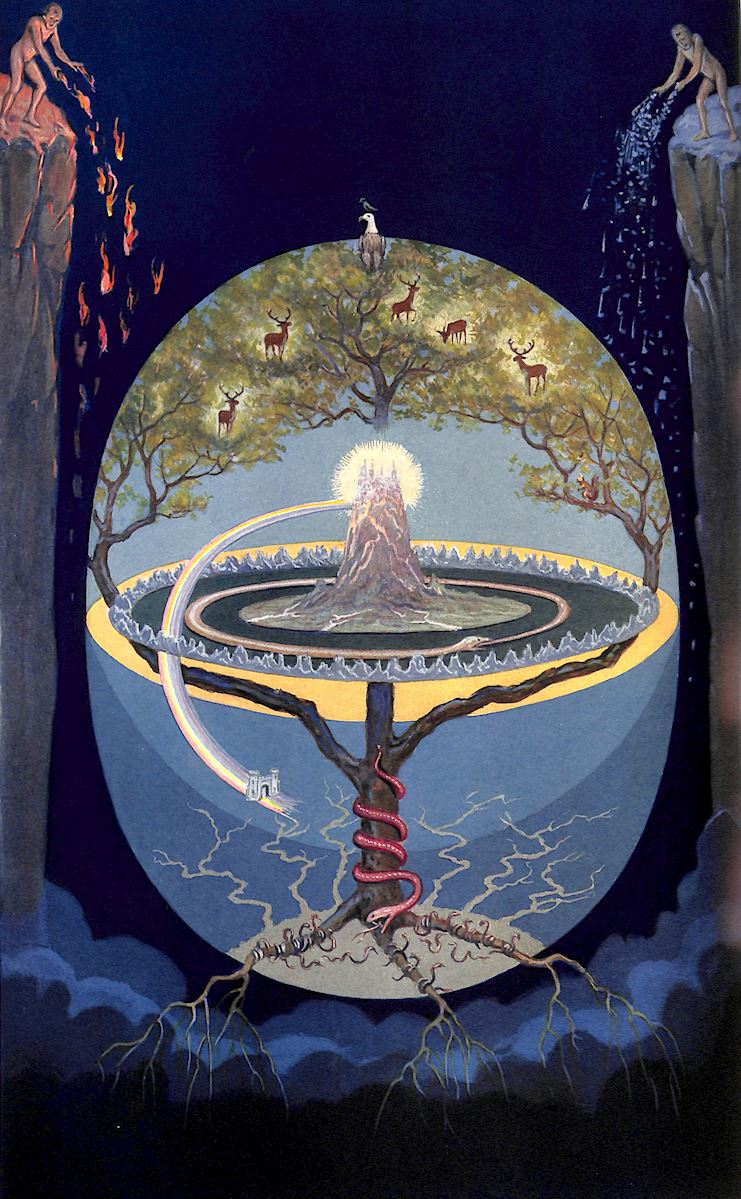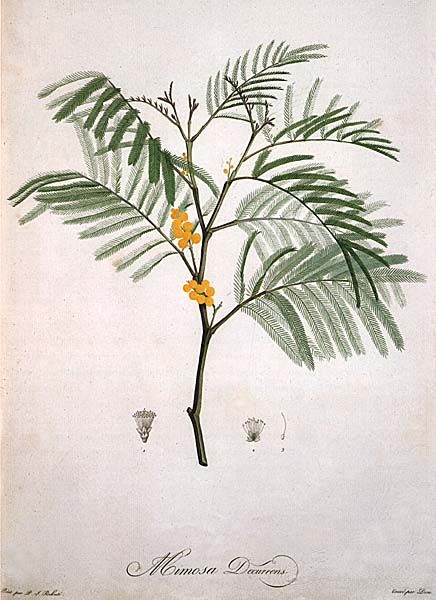Masonic Articles and Essays
Yggdrasil
Very Ills..... Bro... Kristine Wilson-Slack 33o
Date Published:
7/18/2022
Yggdrasil, the Tree of the World, is an ancient symbol found among our Nordic ancestors in the Eddas of Creation. What relation does this axial symbol have to the immortal acacia of the Freemasons?
 Humans have been long fascinated with the World Tree, or in Norse Mythology, Yggdrasil. Yggdrasill (Old Norse: Mimameidr) in Norse mythology, the world tree is a giant ash tree supporting the universe which is comprised of nine worlds. One of its roots extended into Niflheim, the underworld; another into Jötunheim, land of the giants; and the third into Asgard, home of the gods. In the midst of all of these were the other realms where, at least in one, humans dwelt: Midgard.
Humans have been long fascinated with the World Tree, or in Norse Mythology, Yggdrasil. Yggdrasill (Old Norse: Mimameidr) in Norse mythology, the world tree is a giant ash tree supporting the universe which is comprised of nine worlds. One of its roots extended into Niflheim, the underworld; another into Jötunheim, land of the giants; and the third into Asgard, home of the gods. In the midst of all of these were the other realms where, at least in one, humans dwelt: Midgard.
Yggdrasil is mentioned in both the Prose Edda and the Poetic Edda, and its story has been recently retold, beautifully, by Neil Gaiman. There are dozens of myths regarding The World Tree, from the northernmost reaches of the Earth towards the south, where the Hindus revere Ashvattha or the Bodhi Tree.
"WORLD TREES: from Wikipedia, “Specific world trees include égig éro fa in Hungarian mythology, Agaç Ana in Turkic mythology, Andndayin Ca'r in Armenian mythology, Modun in Mongol mythology; Yggdrasil in Norse mythology; Irminsul in Germanic mythology; the oak in Slavic, Finnish, Baltic; Iroko in the Yoruba religion; Jianmu in Chinese mythology, and in Hindu mythology the Ashvattha (a Ficus religiosa).”
– Wikipedia, Cited 21 February 6022
The World Tree has been closely linked to the Tree of Life, and in some cultures, the two may be one and the same. The World Tree, throughout the millennia, has housed realms of beings, larger-than-life creatures, sacred knowledge, springs and founts of wisdom, and the life of the universe. In most of these myths, the roots reach the underworld and the branches, the heights of heaven. In one reference, the tree’s branches reach into the earth, and the roots rise toward heaven. Often involved in these myths are snakes, women, or others who need rescuing, and the hero who must reach the top of the tree, either to kill the snake, save the needy, or learn a piece of hidden knowledge from the mythical creature. The snake may be a large snake or even a dragon, such as Níðhöggr, who gnaws at the roots of Yggdrasil.
What is interesting to me is that in most of these stories, the tree is the source of universal life or the home of worlds and regions far more numerous than our own. Trees have their own ways of communication, via mycorrhizal networks, and communicate often. They rely on other species of trees to provide information and in some cases, security and wisdom. They feel and think, albeit not like humans, of course. The tree has been the source of life here on earth, and it stands to reason that it is a symbol for all universal life.
As above, so below… maybe?
What, the curious Freemason asks, has this to do with Freemasonry? In the first instance, it is a symbol of something, and we Freemasons enjoy a good romp through symbol dissection. Second, Freemasons have their own tree, and it is interesting the symbolism that coincides and collides when we look at the two motifs.
 The Tree of Freemasonry is the acacia (Western), or in Latin, Acacia Vera or vachellia tortilis. The tree is an evergreen tree, common in warmer climates, and is found in Africa, the Middle East, and other temperate climates. The tree’s wood is used to build weapons and furniture, and its resin is used in incense and perfumes. Biblically, it is referred to as the shittah tree and was the wood Moses used to build the Ark of the Covenant, and it was used in the construction of the Tabernacle. While it has many practical uses, I see there is one reason it is such a symbol of immortality: it is an evergreen.
The Tree of Freemasonry is the acacia (Western), or in Latin, Acacia Vera or vachellia tortilis. The tree is an evergreen tree, common in warmer climates, and is found in Africa, the Middle East, and other temperate climates. The tree’s wood is used to build weapons and furniture, and its resin is used in incense and perfumes. Biblically, it is referred to as the shittah tree and was the wood Moses used to build the Ark of the Covenant, and it was used in the construction of the Tabernacle. While it has many practical uses, I see there is one reason it is such a symbol of immortality: it is an evergreen.
This may seem like a simple fact to the majority of the people that live in the Northern Hemisphere. In the Americas and Northern Europe, you can’t travel for any length without seeing or being in a forest of evergreen trees. But, in arid and desert landscapes, evergreen trees are far rarer. The desert evergreen has to pace itself, it has to be strong and flexible. It provides hope where life is literally a drop of water away.
Is the acacia the World Tree of Freemasonry? Perhaps. According to the Grand Lodge of Ohio:
“Like the ancient Egyptians and Israelites, the sprig of acacia primarily symbolizes the immortality of the soul… The evergreen quality of the tree reflects the human spirit, the immortal part of us which can never die.”
– The Grand Lodge of Ohio
The idea is that the human spirit never dies, and in the everlasting life, continues to feed the tree of Humanity. A World Tree. It is different in the aspect that it does not identify a cosmology of the world in the detail of something like Yggdrasil; however, it simplifies the cosmology down to a simple concept: we are all one, and we are eternal.
More Masonic Articles
Explore articles and essays written by Freemasons about Freemasonry.
Read More
Membership
Interested in becoming a member of the worlds oldest Fraternal organization?
Read More